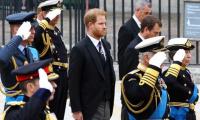Asians are living in exciting times. Transport infrastructure is being built at a rapid pace and regional interconnectivity is on the rise. In this day and age of cross-regional cooperation, the importance of maritime transport and cooperation for trade and development across the world cannot be overemphasised.
Trade, specifically seaborne, is an engine for inclusive and sustainable growth and development. With further growth in regional economic integration, seas and oceans will become the foundation for connecting economic hubs, technology and people.
Pakistan is blessed with a 1,046km coastline that makes it a key part of the 21st century Maritime Silk Road (MSR). With potential ports, like the Gwadar deep-sea port, Pakistan not only connects major stakeholders but also the main engines of growth in Asia, Middle East and Europe. The country has the potential to reap countless dividends provided that it develops its maritime sector through a concerted and well-thought-out policy framework.
The development of the Gwadar Port and inclusion of the Keti Bandar Port in CPEC projects has opened new vistas of growth for industry and trade, which is closely related to sea transport and port operations. Since the inception of the visionary maritime silk route, the maritime sector in Pakistan is slowly but surely gaining the spotlight. On the political front, the Maritime Silk Road can converge China and Pakistan’s common interests, thereby leading to mutual benefits in broad areas of cooperation.
Part of the Belt and Road Initiative (BRI), rejuvenation of the centuries-old Maritime Silk Road serves as a boom for the entire region that primarily aims at leveraging oceans for deepening mutual trade, common growth and enhancing maritime transport channels for developing a ‘blue economy’. Apart from maritime transport, which forms a key component, a blue economy encompasses many activities including fisheries, coastal tourism and recreation, shipping industry and extraction and use of marine non-living resources (minerals, energy sources ie oil and gas).
The worldwide ocean economy is valued at around $1.5 trillion per year. As 80 percent of global trade volume is carried by sea, this sector provides around 350 million jobs in the fisheries sector. ‘Aquaculture’ is the fastest growing food sector that provides about 50 percent of fish for human consumption. The blue economy goes beyond viewing the ocean economy solely as a mechanism for economic growth. With the Arabian Sea and a vast coastal line at its disposal, Pakistan possesses enormous opportunities to boost its economic growth through the blue economy and to tackle unemployment, food insecurity and poverty.
China is working on formulating a mechanism wherein all states that are part of the MSR can work together collectively to enhance economic growth and boost technology cooperation, particularly in the fields of trade, investment and tourism. Dialogue and exchanges between various institutions, universities and think tanks are being encouraged, while Research and Development (R&D) is being widely promoted in the maritime sector. China also plans to give training opportunities to over 30,000 maritime-sector professionals over the coming 10 years to ensure that there is adequate talent to nurture the development of the MSR.
Against all this development, it is imperative that Pakistan realises its maritime potential and works to earn prominence among the participating states of the MSR. Unfortunately, despite a vast coastline, Pakistan has not been able to harness its true potential, primarily due to lack of maritime awareness. However, keeping in view the tremendous opportunity unleashed by the MSR, it is about time Pakistan took comprehensive and adequate steps for sustainable development of the maritime sector, promoted awareness and identified policy steps which could jump start the sector and make it a catalyst for the nation’s economic growth.
Pakistan is located between the three engines of growth of China, CARs and South East Asia, and features as a key player in the MSR with a natural endowment to be the next shipping hub. In the short and immediate-term, the country can recapitalise its harbour infrastructure through marine environmental protection interventions, conduct feasibility studies into offshore marine sources of energy and work on improving skills, imparting training and expertise in ancillary maritime industries.
Alongside all of this, maritime tourism can also be developed on a strong footing. Awareness programmes on water sports and marine recreational activities can be initiated, whereas diving adventure trips and water yacht clubs can be developed on the public-private partnership mode to promote the ecotourism industry.
Notably, as a maritime nation, Pakistan ought to exploit its sea resources effectively and develop the shipping and shipbuilding industries. However, to realise this dream, key players in Pakistan’s maritime sector need to understand the uniqueness of the country’s location and the potential of its blue economy, and immediately step up the process of building a sustainable blue economy through ‘Operation Blue Economy’. Pakistan needs to immediately explore areas of maritime cooperation with all participating countries of MSR.
In order to have a sustainable green economy on land, we need to promote a sustainable blue economy at sea and in the coastal regions. As a first step, we need to immediately develop fisheries sectors, aquaculture, coastal tourism and ocean energy. This will entail better planning in order to achieve optimum potential. Policies and incentives may be given to attract foreign direct investment in the coastal belt. Essentially, governments can build on the extensive public-private partnership model to define a suitable strategy that would ensure successful collaboration and generate sustainable development outcomes.
Important prerequisites for a successful public-private partnership are as follows: well-designed public-private partnership agreements, which ensure appropriate risk-sharing and flexibility; a clear policy framework that addresses and mitigates risks and an institutional framework, including technical and managerial capacity-building, to properly manage the process. A maritime special economic zone (SEZ) near the coastal belt on a similar public-private partnership model may provide the necessary jump start. The SEZ may include a maritime vocational training centre that can be established with the support of Navy and the Pakistan National Shipping Corporation.
The maritime sector will remain a crucial component of national economic growth and seaborne trade will continue as the most important mode of transport for the trade of international merchandise. The ministries of maritime affairs and communications and port authorities need to understand the determinants of maritime transport connectivity, as well as the associated opportunities and risks, to ensure informed policy and decision-making processes and adequate investment plans in shipping, ports and their ocean-led economy connections.
The writer is project director of CPEC at the Ministry of Planning, Development & Reform.
Email: hdb4049@gmail.com
This image shows Pakistan's Ayesha Rashid, who was recently given the heart of a 69-year-old brain-dead Indian patient...
A car is seen burning along a road as Pakistan Tehreek-e-Insaf party activists and supporters of former prime...
Students of the Church Mission School, located in the heart of Karachi’s old city area, brief a judge about the...
The National Electric Power Regulatory Authority headquarters can be seen in this picture released on November 4,...
Chinese President Xi Jinping and US President Joe Biden meet at the G20 leaders’ summit in Nusa Dua. — AFP/FileA...
Over the past few years, we have witnessed a complex and dynamic interplay between soft power and nation branding that...







